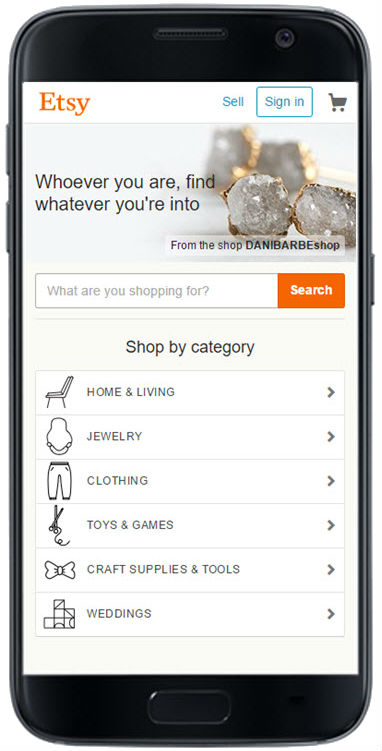
The 10 Most Common Reasons for Shopping Cart Abandonment
This is a guest post by the Skubana team.
It’s tough to close a sale on the Internet. While shoppers are happy to fill up their carts, they are much more cautious about filling out their credit card information. It is estimated that shopping cart abandonment amounts to $18 billion in lost revenue each year.
Why do so many customers spend their time perusing online stores, adding their favorite items, carefully reading over product descriptions and adding items and curate a Wishlist, just to abandon their carts? Most of this behavior can be attributed to a failure to capture and sustain consumer interest.
What makes customers become so disinterested? There is a myriad of factors that cause a shopper to abandon ship. Let’s take a closer look at the 10 most common reasons for shopping cart abandonment and see how you could best optimize your store to avoid them:
1. Extra fees
The overwhelming reason for shopping cart abandonment is the customer being presented with fees, taxes or shipping costs they did not expect. This could be combated by offering free shipping on large orders and doing away with any credit card processing fees.
Amazon does a great job of counteracting expensive shipping costs. They provide free shipping on certain orders as well as free expedited shipping to Prime members.
L.L. Bean, the outdoors retailer, adopted a similar strategy in 2011: all online orders in the US and Canada come with free shipping, regardless of order size. This may have been too costly, however, as the company is seeking to reshape its shipping policy this year.
2. Too many steps
You don’t ever want to make the customer work to pay you. A fabulously robust payment system won’t translate into revenue if it isn’t quick and easy to use. Getting a customer through, at maximum, two or three steps should be the goal. Any additional steps may lead to more uncompleted transactions.
Amazon circumvents steps with their patented one-click order button, which allows registered Amazon shoppers to purchase goods with the click of a button. Apple, on the other hand, allows users to skip the dreaded registration steps altogether.
3. Not enough payment options
If you only accept payment through Paypal, don’t expect a customer to create a new account just for you. Focusing on convenience is key to emboldening brand loyalty and reducing shopping cart abandonment.
Walmart.com offers an incredible amount of options. They accept all major credit cards, check cards, and eGift Cards as well as a “Pay with Cash” choice that gives customers the option of utilizing a physical Walmart store to complete their online purchase.
While you may not have the resources to roll out a “Pay with Cash” option, offering all major credit cards as a form of payment is a must-have for your business in this day and age with services like Square and Braintree at your disposal.
4. Too expensive
Forty-six percent of shopping cart abandonment occurs during the final stages, specifically during payment. Online shoppers are good about comparing prices to other outlets, and will always seek a lower priced item (sometimes with the help of price comparison search engines like PriceGrabber).
Unlike shopping in a physical store, it takes virtually no effort to hop from one online retailer to the next.
Adobe has relatively high rates of shopping cart abandonment. While Adobe is a purveyor of some of the highest quality photo editing software, such as PhotoShop and InDesign, they also compete with open-source freeware like GIMP. For this reason it’s important, especially for small to medium-sized retailers, to remain competitively priced.
5. Iffy security
Essentially, this is a UI issue more than it is a security issue. Even if your site is incredibly secure, if users do not perceive it to be, they won’t feel comfortable about entering their personal information and proceed with the purchase transaction. A trusted retailer’s site will look and feel both clean and professional and give the customers an assurance that they’re not going to be vulnerable of any security breaches.
Companies like Apple shine here. Apple invests heavily into its sleek, intuitive design and therefore has some of the strongest brand confidence.
6. Lack of mobile friendliness
Over a third of all internet traffic can be attributed to smartphones. More and more people are using smartphones to do their online shopping and your site should be built with this in mind. Awkward forms that are hard to navigate will quickly be abandoned by mobile users. Optimizing UI, on all devices, is critical as the buying process should be as easy and intuitive as a click of a button. Amazon, for example, has a one-click buy option that makes buying items instantly, on any device, a possibility.
The online marketplace Etsy serves as a fabulous example of mobile design. Etsy’s mobile site uses large buttons, dropdown menus, and pared-down gallery images to make navigating, browsing and searching a cinch.
7. No free returns
Many online retailers lack the shopping incentives provided by brick-and-mortar shops, like free returns. Customers are less likely to feel unsure about completing a purchase if they have the option of returning items at no cost.
Again, Amazon sets an example of what online retailers should strive toward with the promise of free returns when your order is fulfilled by the Washington-based tech giant.
Zappos, the shoe and clothing store, is even more famous for its forgiving return policy. It’s entirely free, complete with pre-paid shipping labels, and you have one full year to send your items back.
8. No live customer support
Technical issues can prevent users who are more than willing to shell out their cash from completing their transactions. Unfortunately, most eCommerce businesses have no way of helping walk a customer through a technical issue as it’s happening. What’s more, customers aren’t able to converse with product experts, which may help them find the process more convenient and help bolster confidence in their shopping decisions.
Retail fashion has already tapped into this increased transaction potential through live support. Chico’s, for example, offers live chats with stylists to help guide shoppers. The women’s clothing outlet, Nordstrom, goes a step further, offering live chats with beauty, wedding or designer stylists in addition to their live customer support.
9. Page doesn’t load fast enough
Customers expect pages to load quickly, especially during the payment process. Slower page loads can eat away at impulse purchases and degrade consumer trust. Almost ironically, online retailers’ load times have been on the rise in recent years.
Reportedly, Nordstrom experienced a rather substantial 11% decrease in sales due to a half-second increase in average load time.
E-commerce sites continue to work to reduce slow load times because of their apparent deleterious effect on business. Vistaprint, for example, has some of the fastest load times, with page load speeds averaging about half a second, which is far below the US average of three seconds.
10. Non-committal shoppers
A great many customers cited that they simply changed their mind or were only browsing in the first place as the reasons for abandoning their shopping carts. Offering promos, coupons and one-time-only offers once they’ve added items to their shopping cart are a few ways to prevent this online shopping malaise.
Best Buy rewards online purchases with its loyalty program, which awards one point per dollar spent. This can serve as a very appealing incentive for completing expensive orders and may also assist in combating shopping cart abandonment. You may want to consider integrating a loyalty program into your online store if you rely heavily on repeat business or large orders.
The prevalence of shopping cart abandonment is taking its toll on online retailers. It cuts out massive chunks of possible revenue and infuriates store owners. On the Internet, the competition is fierce. It takes minimal effort for customers to load up their shopping carts with a different brand, if they don’t find an offer appealing enough. If an online retailer cannot capture their interest and help them complete their purchase in a timely manner, they will more than likely lose them. Often, prices aren’t competitive enough. Or, worse, the process has yet to be optimized by UI designers and is therefore too long and complicated, giving the customer time to second-guess their purchase.
Online stores have to come up with ingenious ways to motivate their customers to complete their transactions, whether it be through fast load times, a one-step purchasing process or money-saving promotions and improve their retention rates in the process. If you’re experiencing a loss of profit due to shopping cart abandonment, assess how your site could be improved and try implementing some of these ideas into your business. Speak with your existing customers, incorporate their input, and test the changes you make to your payment system. Over time, with a bit of patience and well-documented consumer research at your side, you could see an uptick in completed purchases.
Skubana is an all-in-one ERP system and operations platform designed for high volume sellers to run and automate their business. By unifying point solutions in one place, sellers can now diagnose what used to take weeks in seconds. It integrates with most e-commerce marketplaces, 3PLs, and warehouses, provides profitability and multi-channel inventory management, and compiles all of your marketplaces on a single convenient dashboard. Reach them at info@skubana.com with any questions, or sign up for a 14-day trial.





